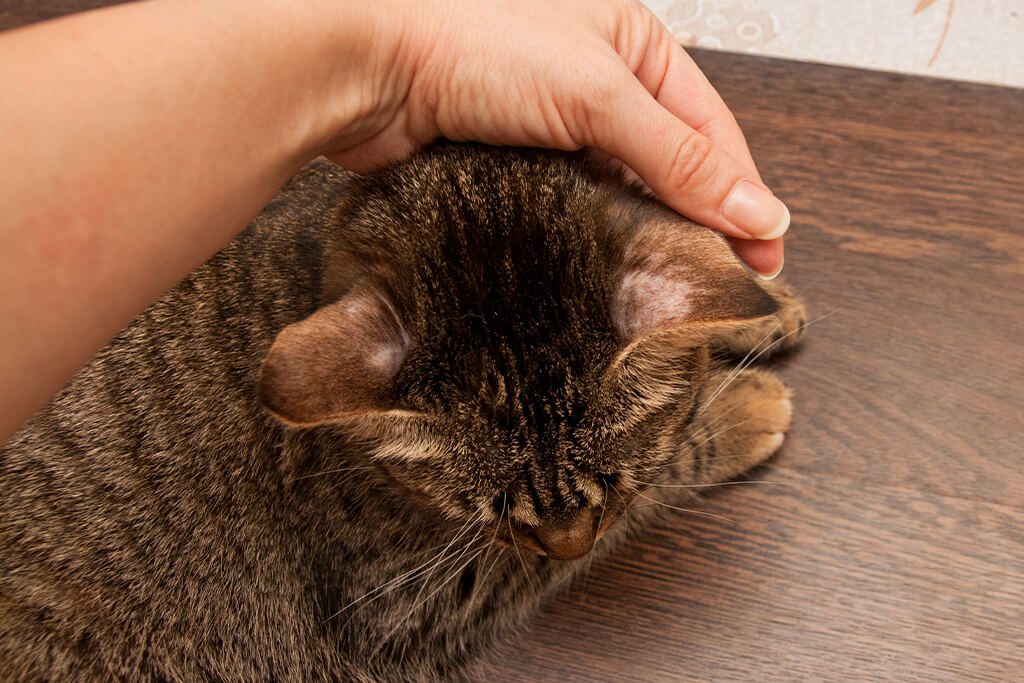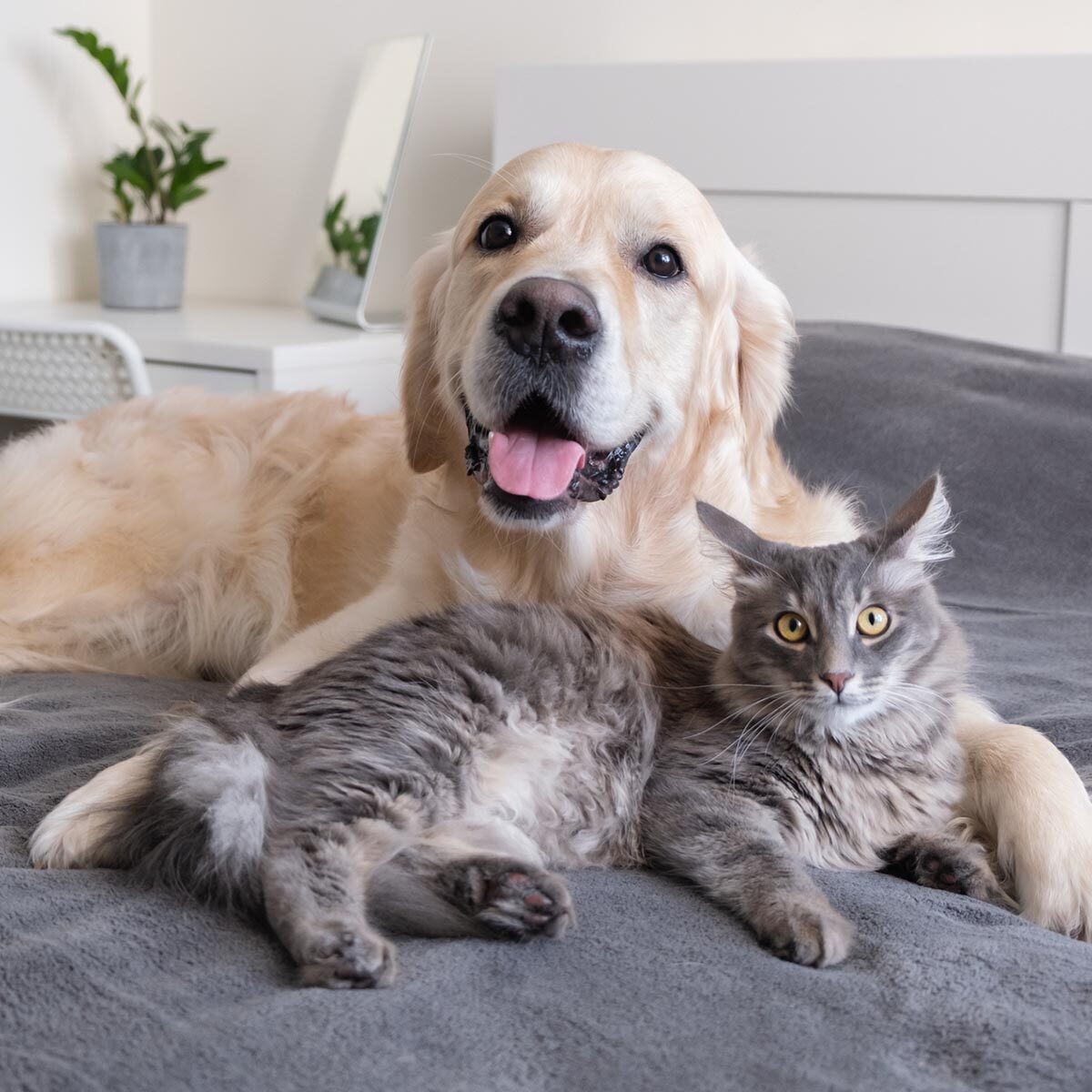Is It Normal for Cats to Have a Bald Spot?
Noticing a bald spot on your cat can be worrying. You might wonder if it’s normal or a sign of a health issue. In this blog, we’ll explore what can cause a cat-bald-spot, when it’s a concern, and how to help your cat. If you’re worried about your cat’s skin or fur, the caring team at Auburndale Veterinary Clinic in Auburndale, FL, is here to help. Give us a call at (863) 967-5854 for advice or to book an appointment.

Common Causes of Bald Spots in Cats
Cats naturally shed fur, but this doesn’t usually cause noticeable bald spots. If you see a spot where fur is significantly thinner or completely gone, it’s worth a closer look.
Skin Conditions and Allergies
- Allergies: Cats can develop allergies to food, pollen, or even flea bites. These allergies can cause itching and over-grooming, leading to bald spots.
- Skin Infections: Fungal or bacterial infections can also lead to hair loss.
- Parasites: Fleas, mites, or lice can cause itching and hair loss.
Stress and Behavioral Issues
- Over-Grooming: Cats sometimes over-groom due to stress, boredom, or anxiety, leading to bald spots.
- Psychological Issues: In some cases, psychological factors can cause a cat to groom excessively.
When to Be Concerned About Your Cat’s Bald Spot
- Irritated Skin: Look for redness, bumps, or signs of infection.
- Change in Behavior: If your cat is grooming excessively, acting differently, or seems uncomfortable, it’s a concern.
- Rapid Hair Loss: If the bald spot appears suddenly or is growing quickly, it’s important to investigate.
Monitoring Your Cat’s Health
Keep an eye on your cat’s overall health and behavior. Changes in appetite, activity level, or mood can be linked to health issues.
Caring for a Cat with a Bald Spot
Regular grooming helps you keep an eye on your cat’s fur and skin condition. It’s also a good time to check for fleas or other parasites.
Creating a Stress-Free Environment
Reducing stress can help if the bald spot is due to behavioral issues. Provide a safe, quiet space for your cat, and consider toys and activities to keep them engaged.
Diet and Nutrition
A healthy diet plays a role in skin and fur health. Ensure your cat is eating a balanced diet appropriate for their age and health needs.
When to Seek Veterinary Care
As a responsible cat owner, it’s important to know when a bald spot requires professional attention. Here are some signs that it’s time to reach out to your veterinarian:
- Persistent or Worsening Bald Spots: If the bald spot isn’t improving, or if it’s getting bigger, it’s a sign that something more than normal shedding is happening.
- Skin Changes: Look for signs like redness, flaking, swelling, or discharge. These symptoms can indicate an infection or other skin condition that needs treatment.
- Itching and Scratching: If your cat is constantly itching or scratching at the bald spot, this could mean they are uncomfortable and need relief.
- Behavioral Changes: Changes in your cat’s behavior, such as increased grooming, hiding more than usual, or changes in eating habits, can be signs of distress or discomfort.
What to Expect During a Vet Visit
When you bring your cat to the vet for a bald spot, here’s what might happen:
- Medical History Review: Your vet will ask about your cat’s overall health, diet, grooming habits, and any recent changes in their environment or behavior.
- Physical Examination: The vet will examine your cat, focusing on the area of hair loss. They will look for signs of skin problems, parasites, or other issues.
- Diagnostic Tests: Depending on the examination’s findings, your vet might recommend tests. These could include skin scrapings, blood tests, or allergy tests to help diagnose the cause of the bald spot.
Possible Treatments
Treatment will depend on the diagnosis. It might include:
- Medications: If an infection or allergy is causing the bald spot, your vet may prescribe antibiotics, antifungals, or allergy medications.
- Topical Treatments: For certain skin conditions, your vet might suggest creams or ointments to apply to the affected area.
- Dietary Changes: If a nutritional issue is suspected, your vet may recommend changes to your cat’s diet.
- Environmental and Behavioral Modifications: If stress or environmental factors are contributing, your vet might suggest changes to your cat’s surroundings or routine.
The Importance of Follow-Up
After your vet visit, it’s important to follow their advice closely. This might include giving medications as prescribed, changing your cat’s diet, or making changes to their environment. Follow-up appointments may also be necessary to monitor your cat’s progress and adjust treatment as needed.
Auburndale Veterinary Clinic Can Help
At Auburndale Veterinary Clinic, we understand your concerns about your cat’s health. If you’re worried about a cat-bald-spot or any other health issue, give us a call at (863) 967-5854. Our knowledgeable team is here to provide advice, support, and professional care for your beloved cat.
Recent Posts
About Us
Even long after they’re gone, we never forget our beloved pets. They make our families whole and bring so much joy to our lives. Our veterinarians and staff in Auburndale, FL know that the human-animal bond is sacred. To protect that bond, we aim to provide the highest level of medicine and the kindest, most compassionate care we can. Our goal is to help you help your pet stay healthy and happy for as long as possible. With wellness and preventative care, medical care for illnesses and injuries, routine surgery, dentistry and more, you can rest assured that all your pet’s needs are being met.

